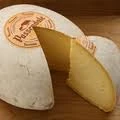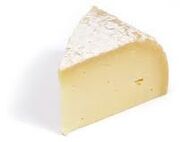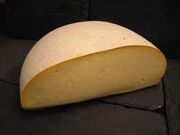
Passendale cheese

|
This page uses content from Wikipedia. The original article was at Passendale cheese. The list of authors can be seen in the page history. As with WikiCheese, the text of Wikipedia is available under the Creative Commons Attribution-Share Alike License 3.0 (Unported) (CC-BY-SA). |
Passendale cheese, named for Passendale, the village where it originated, is one of the best-known cheeses in Belgium. The regular Passendale cheese exists in two variations called Passendale Classic and Passendale Prelude. And next to the regular Passendale, there is a quality version called Passendale Bel Age.
Passendale Cheese resembles a loaf of bread. It has a round shape and a hard, but edible brown rind with spots of white. Inside, the flesh is golden, dotted with small holes and very creamy. It has a firm and damp consistency, slightly sweet bouquet and mild flavor.

Passendale cheese
History[]
The Donck family from Passendale started producing cheeses back in 1932. Many milk producers from the area cooperated and after WWII they started producing milk, butter and yoghurt as well. Soon they relocated to a former brewery. In 1978, they launched a cheese inspired by local tradition, "de Groot Hof–Grand’Ferme". For export reasons the cheese was renamed Passendale in 1980. In 1991 the Comelco group, owner of the company making Passendale, was taken over by the Dutch Campina company. The Bongrain group took over the company in 2007 and came in second place on the Belgian market for cheese products.

Passendale cheese
Types of Passendale[]
Classic and Prelude[]
At the end of the ripening process the rind of the Passendale Classic is brushed before the cheese is packaged.
Passendale Bel Age[]
This cheese ripens for 6 months in the cheese cellars of Cheesemaker Passendale and has a more distinguished taste.